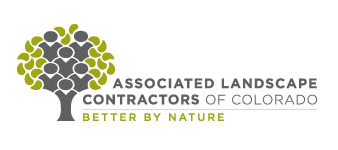| Secrets of a former DOL auditor |
 |
| News |
| Wednesday, February 11, 2015 10:00 PM |
|
Landscape companies have been a specific target of the U.S. Department of Labor: Wage and Hour Division (DOL WHD) for several years. According to the U.S. DOL Data Enforcement website, landscape companies agreed to pay more than $20 million in back wages to their employees between 2006 and 2012 for violations of the Fair Labor Standards Act - an amount that does not include other charges such as penalties and damages. Landscape companies are frequently found in violation of labor laws due to a variety of unique pay practices and employment scenarios. In fact, in 2012, according to the DOL Data Enforcement website, landscape companies were the third most commonly investigated sector in Colorado, only behind child care services and full service restaurants. Another reason for increased enforcement is that landscape companies employ a high percentage of what the DOL refers to as “vulnerable workers” because of their relative high risk of exploitation due to low pay and benefits, ignorance of rights under the law, and/or reluctance to exercise those rights. A landscape company is subject to the Fair Labor Standards Act (FLSA) if its annual sales volume exceeds $500,000. Even if it does less than $500,000 some of its individual employees may be covered if they engage in interstate commerce activities like swiping credit cards or ordering goods from out of state. The State of Colorado’s labor laws found in the state Wage Order apply to all private sector employers in four main categories including retail/service and Be aware of H-2B investigations It is difficult to stay in compliance with the H-2B program because:
In addition to back wages, penalties for violations of H-2B rules can be severe, usually starting at $5,000 per violation per certification. Wondering: why me? Complaints are almost always from current or former employees of a company. When an employee calls the Wage and Hour office with a complaint, the information is recorded and analyzed to determine whether or not it is likely that the employer is violating one of the labor laws enforced by the agency. If the agency believes that the violation is affecting A growing minority of investigations are initiated through industry wide action plans, not a complaint. Each year DOL develops strategic plans that target certain industries on national, regional and local levels – industries DOL believes are committing widespread violations. For example, in 2013, the Denver District office of DOL WHD targeted daycare facilities, greenhouses, and nurseries along the Front Range of Colorado and restaurants in Aspen, Colo. The WHD attempts to investigate a critical mass of these establishments in a given geographical area to encourage compliance, not only at the businesses being investigated, but in the industry as a whole. How the process works Throughout the investigation you will be asked to provide a variety of information including: payroll records, time records, employee lists, and proof of annual dollar volume (to assert coverage under the FLSA). Almost all investigations will cover a two year period reaching back from the date your investigation begins. Common sense suggests that you should be respectful and open to working with the investigator but only provide information specifically requested. Common sense suggests that you should be respectful and open to working with the investigator, but only provide information specifically requested. There is no best way to deal with a Wage and Hour investigation because the personality and investigative process will vary greatly depending on the investigator assigned to your case. While it is not necessary to have legal or other guidance throughout the process you may want to bring in outside help if you feel uncomfortable with the how the investigation is proceeding or you are concerned about the potential liability. The audit process includes the following steps: 2. Employee Interviews: The investigator will conduct interviews with employees at the establishment in a private setting. You are not required to allow this as an employer but it might be a good idea to set the tone for the investigation. If the investigator interviews management employees, you (or a lawyer, officer, etc.) are allowed to sit in on these interviews. The investigator is required to interview a representative sample of employees and will most likely interview them at the establishment in addition to calling several employees outside work hours or returning for more rounds of interviews at the establishment. 3. Records Review: The investigator will usually request a few weeks’ or months’ worth of sample payroll and time records. If violations are found, the investigator will request access to the full two year period of records. 4. Case Analysis and Calculation of Back Wages: Over the course of several weeks or months the investigator will process all of the information taken from the initial conference, employee interviews, and records review to make a determination regarding violations. If violations occurred in the last two years the investigator will calculate back wages. 5. Final Conference: The investigator will set up a final conference to discuss the violations and request payment of back wages, liquidated damages, and penalties. Penalties under the FLSA are only assessed for child labor violations and repeat violations. If the employer agrees to comply in the future, but refuses to pay, or refuses to comply in the This article originally appeared in the November/December 2014 issue of Colorado Green. Kalen Fraser, CEO, The Labor Brain Inc., is a former US DOL investigator, who founded her company to give employers information needed to succeed. www.laborbrain.com Read more in this issue of Colorado Green NOW: |

 Former DOL investigator
Former DOL investigator 
